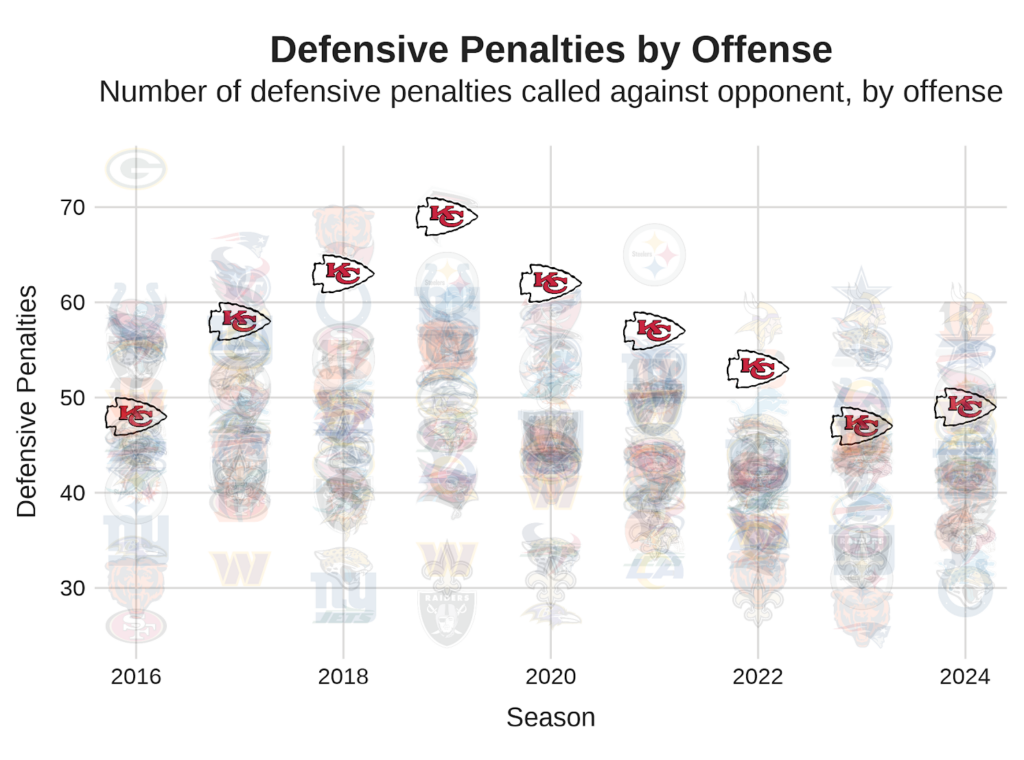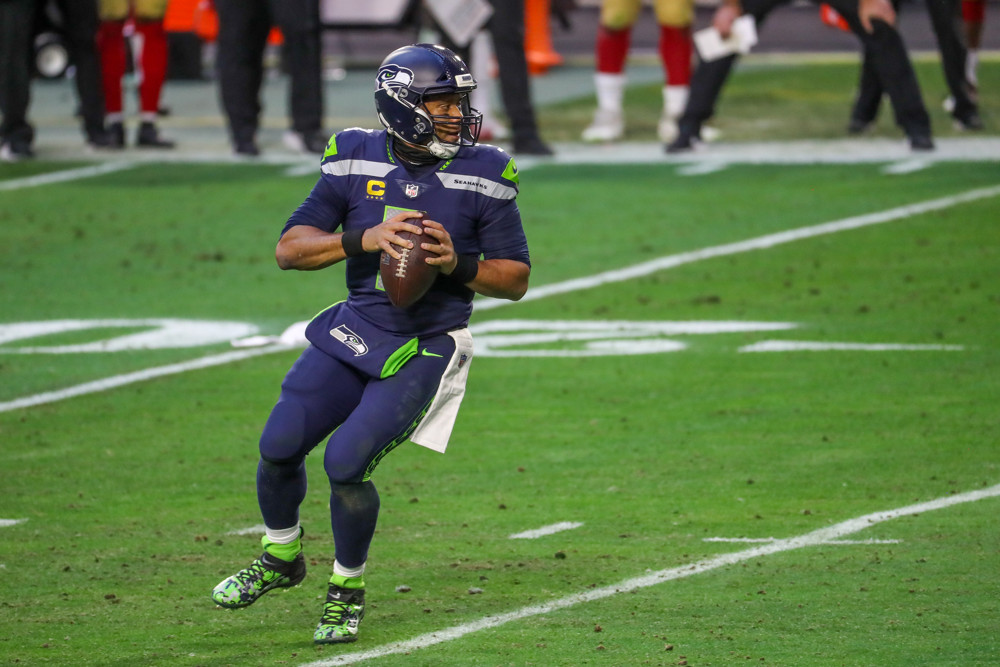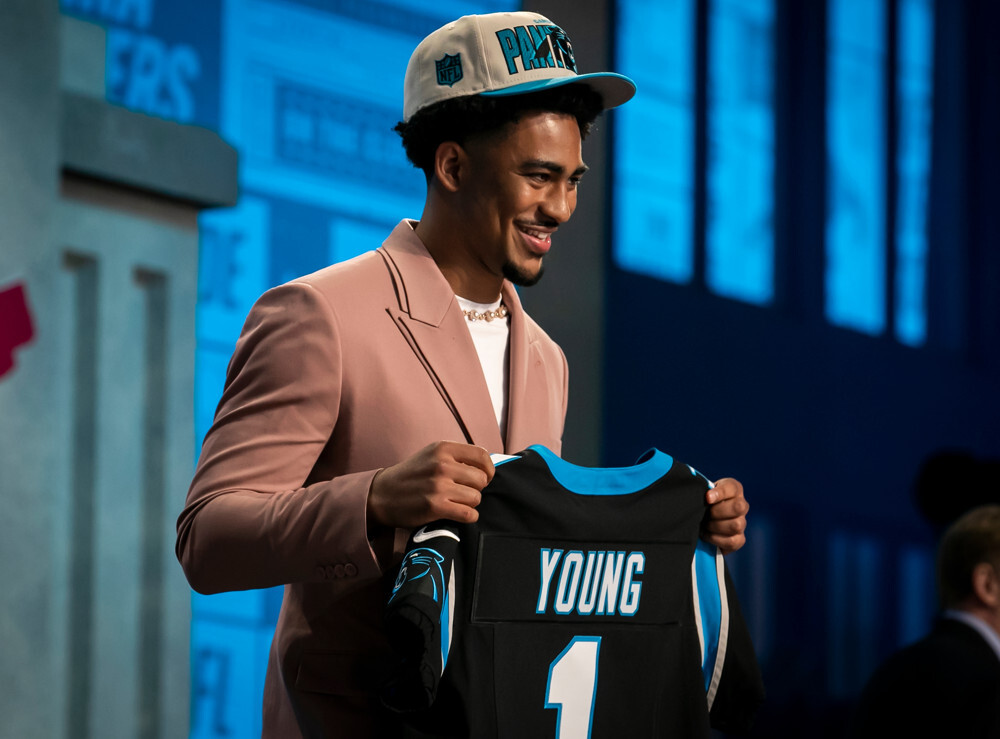Photo: Scott Winters/Icon Sportswire
With Kansas City on the precipice of making NFL history – a Super Bowl threepeat – some NFL fans are feeling a bit of Mahomes fatigue. The 29-year-old signalcaller has already won three Super Bowls, is about to compete for his fourth, and seems poised to be the league’s boogeyman for the foreseeable future. And just like Brady before him, grumbling about favoritism he gets from officiating crews has emerged from those who deny or downplay his greatness.
This largely seems like infantile coping – it doesn’t take a veteran NFL scout to see that Mahomes is extremely talented – but we at SIS are morbidly curious about whether or not there’s any validity to the idea that Mahomes is the NFL’s favorite son.
Fortunately, we track officiating crews as far back as our database goes (2016). We could tell you which crews call the most Defensive Pass Interferences, which crews are more liable to throw flags on the visiting team, which crews throw flags in late-game situations, or which crews get overturned on review the most, and we can also tell you whether or not the Kansas City offense benefits disproportionately from officiating.
It’s first important to acknowledge that each ref crew officiates a bit differently in a given year. For example, in 2024, Clay Martin’s crew called offensive holding penalties almost twice as often as the NFL average, whereas Tra Blake and company came in below the NFL average and rarely flag holds on passing plays.
From here, we can set a baseline for each crew across multiple categories (e.g. home/away, offense/defense, penalty type, situation, etc.) and compare that to a team’s penalty profile in aggregate. If a team consistently sees more (or fewer) penalties than would be expected based on the crews that officiated them, then there’s at least something to talk about.
There are, of course, other factors that could reasonably result in an officiating crew deviating from their baseline in a given game. For example, a team may have a handsy corner who creates a lot of contact and draws a lot of DPI calls. A quarterback might be really good at drawing offsides or pass interference.
Even with that in mind, Kansas City’s offense doesn’t stand out in a meaningful way.
They are one of eight offenses in 2024 who were both penalized below expectation and drew defensive penalties above expectation, but neither of these rates were to an egregious extent. The Chiefs ranked 9th in offensive penalty rate against crew average (-7%) and 12th in defensive penalty rate (+7%), but the latter figure doesn’t compare to the Joe Burrow-led Bengals (+24%) or Josh Allen’s Bills (+26%). Nor does it come even close to the rate at which defenses playing the 2020 Super Bowl champion Buccaneers were penalized (+29%).
In fact, if anything, Mahomes is enjoying fewer flags against the defense than he ever has. In the beginning of his career, defenses playing Kansas City were consistently penalized at a very high rate relative to expectation. There was a run from 2018-2022 where Kansas City saw opposing defenses flagged at a pretty high rate, ranging from +24% at the low end to +38% at the high end. They’re in no way notable over the last two seasons, though.

How impactful is that imbalance in penalties? The net EPA gained on penalties never exceeded 0.65 EPA per game in any season during that window. That may seem high, but it barely cracks the top 50 of single team seasons over the past 9 years, and it pales in comparison to the 2020 Bucs who were 1st at +1.8 per game. The EPA in and of itself admittedly cannot account for wiping big, negative outcomes off the board, but the number isn’t so high in and of itself.
Now, is any of this hard evidence that the NFL issued some kind of officiating mandate or that the referees otherwise showed favoritism to Kansas City? No. You’d need a more rigorous model to control for other variables (including the teams and players themselves) and do some investigative reporting to be able to responsibly conclude such a thing. But, is it interesting enough to throw out there and instigate some discourse while remaining on the fence? Yes, and it’s certainly not what we expected to find, either.
If you’ve already got your tin foil hat on, you’ll have to take it up with the NFL referees’ union, who recently shot down assertions that the Chiefs get favorable calls. That, at the very least, seems to be true the last couple of years, in which penalties have leaned against them on average (in terms of EPA per game). Beyond that, we’re staying out of this for now, and we leave the rest to those of you who are more given to conspiracy theories.


